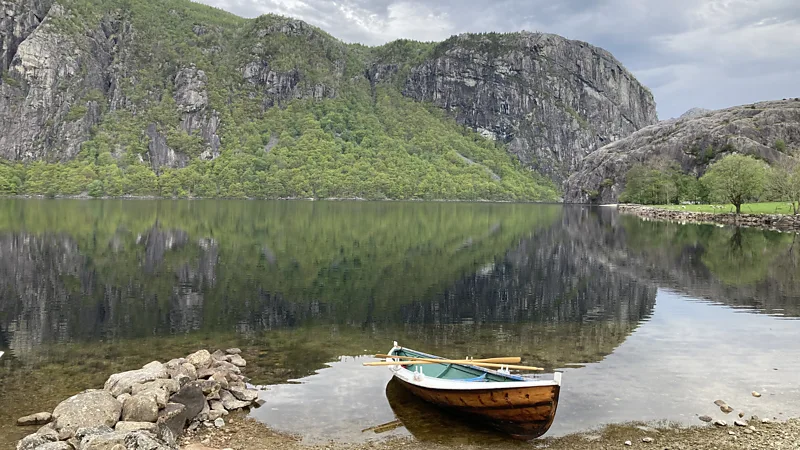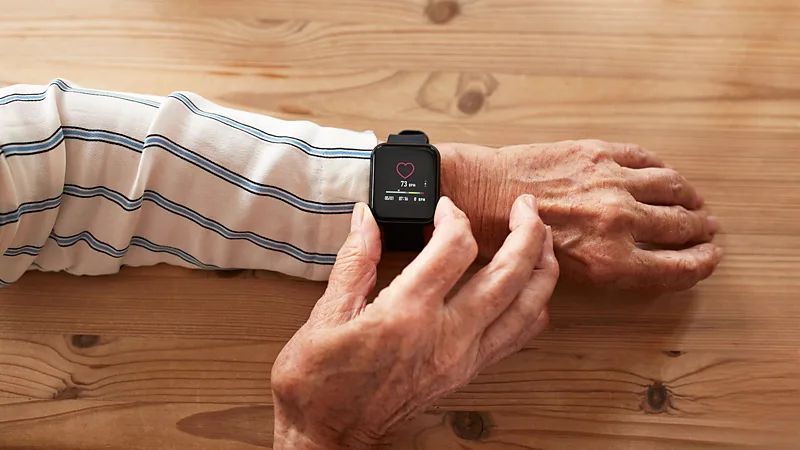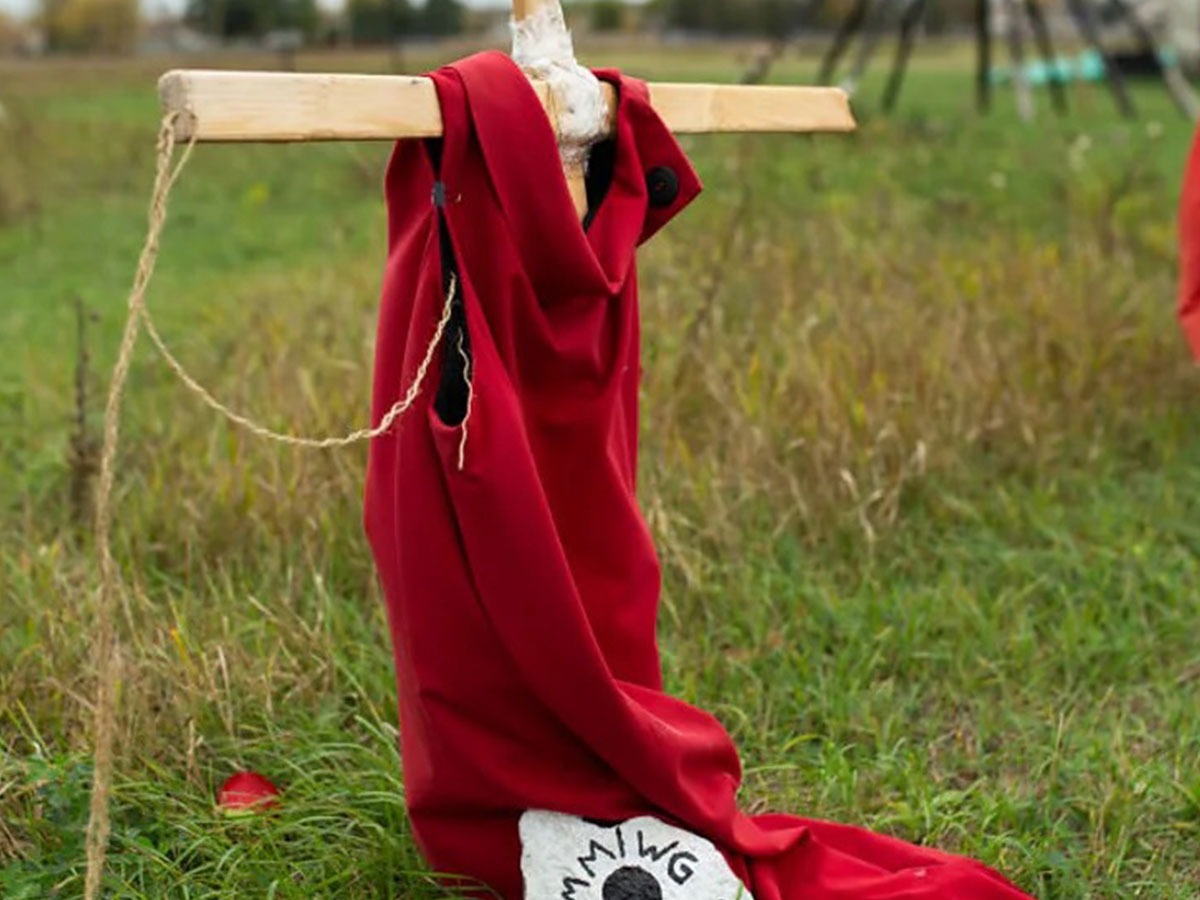
Norway’s Historic Cabin Life Inspires Modern Sustainability
Norway offers a unique glimpse into greener, cleaner living through one family’s experiences which aims to show how the simplicity of mid-19th-century life can teach valuable lessons about sustainability today.
The journey to my overnight stay felt like a typical approach to any valley within Norway’s fjords—steep, rocky mountainsides lined with thick conifer forests encroached on the narrow road leading to Haukalivatnet Lake. As the path grew steeper, signalling the end of settlement possibilities, I finally reached a fertile, gentler area.

Reidunn Botnehagen’s family has farmed this land for over a century, a familiar story for many in this beautiful region of south-west Norway. The family also rents out a countryside cabin named Haukali 333. But this isn’t just another getaway. The cabin intentionally abandons modern conveniences to recreate the way of life from nearly 200 years ago, when Norway’s wilderness was being settled.
According to Botnehagen, her guests are all the better for this experience. Haukali 333 is designed as a husmannshus or smallholder’s cabin. In rural Norway, these cabins were once homes for tenant farmers, who worked long, hard hours to make ends meet on land owned by wealthier individuals. Husmannshus gained prominence in the late 1800s when Norwegian writer Henrik Ibsen romanticized them, and more recently, they’ve been linked with nostalgia for rural life as Norwegians have moved to urban areas.
Cabin culture is thriving in Norway, with almost 450,000 cabins and holiday homes as of 2023, according to Statistics Norway. That number has increased by more than 8% since 2013. While many of these homes are luxurious retreats designed to look rustic on the outside, Haukali 333 stands out by faithfully recreating a 19th-century lifestyle. The goal is to showcase a more sustainable way of living, rooted in self-sufficiency.

At first glance, this might not seem like the makings of a relaxing holiday. But as Botnehagen shared with a smile, “No one is saying that life then was all good, but it wasn’t all bad either. We want to show how it was, as much as possible, and we believe people will discover something from it.”
Upon arrival, I found the wood-built cabin delightfully rustic. A turf roof, sky-blue door, and grazing sheep added to the charm, while the surrounding views of a mountain-backed lake framed the setting. Only one or two other houses were visible in the distance.
Inside, the mostly candlelit cabin featured a large open stone oven, called a grue in 19th-century Norway, used for both cooking and heating. The seating, although attractive, was simple—hard, high-backed wooden chairs that were far from comfortable. The outdoor shower was supplied by a cool spring, or I could fill a tub with water and wait for the sun to warm it.

The beds, reached by a ladder, were built into the walls, head-to-foot, just as they would have been in the 1800s, and were covered in fleeces from the family’s sheep. No TV was present, but instead, there was a rock (a spinning wheel) to spin wool, reflecting the kind of evening entertainment common in the 19th century.
Botnehagen encouraged me to pick fruit and vegetables from the garden, with strawberries available in July and potatoes in August. Fishing on the lake was also an option, as was rowing a boat to catch my dinner. For those who want to fully immerse themselves, there’s even a set of 19th-century labourers’ clothes provided. Back in the 1800s, it was common for a farmer to own just one set of garments.
There are, of course, some modern adjustments for safety. A toilet and a bit of electricity are provided to power an old kerosene lamp. But other than these small concessions, the experience offers views and a lifestyle very similar to that of a mid-19th-century farm worker.
Most guests appreciate what Haukali 333 calls a “slow life like 1850.” Botnehagen shared stories of guests’ fascination with the simple life, like a couple from London who were amazed by the brilliance of the stars, or children who grew attached to the chickens during their stay. A Danish family visits because they spend time together here in ways they find impossible at home, whether picking berries, chopping firewood, or hiking in peace.
This love of the outdoors runs deep in Norwegian culture, embedded in the concept of allemannsretten (Everyman’s Right), which allows people to roam freely in nature, forage, fish, and camp in wilderness areas. This right has been a cornerstone of Norse society since Viking times and was codified in law in 1957. The simple, off-grid cabins make it easier for Norwegians to access and enjoy nature.
Occasionally, Botnehagen admits, some guests leave early, unable to handle the silence or the lack of modern conveniences. But for most, this experience offers a new kind of luxury, where the simplicity of nature is the main attraction.
The idea for Haukali 333 came to Botnehagen in 2014, after inheriting the farm from her grandparents. While preparing land for pasture, she uncovered old stones from the former smallholding and felt a deep sadness that the house and its history had been forgotten. This inspired her to bring the story back to life by authentically reconstructing a homestead and inviting guests to experience it.
With support from Innovation Norway, Botnehagen researched the era thoroughly, visiting several historic sites and studying books on 19th-century rural customs. The cabin opened to guests in 2018, but the project became about more than just offering a nostalgic escape—it was about sharing the lessons of the past for living more sustainably today.

Botnehagen explained that the lake provides fish, the soil grows fruits and vegetables, and the sheep supply wool. This was all essential for survival in the 1800s, but today it is viewed as a luxury. Back then, however, it was simply a way of life.
She introduced me to her mother, Målfrid Lea, who grew up on Haukalivatnet in the 1940s. Målfrid remembered that although there wasn’t much money, families like hers were considered well-off if they had chickens or cows. She recalled taking eggs to town by horse and exchanging them for flour—another reminder of life based on self-sufficiency and trade.
Botnehagen wants guests to experience Haukali 333 in all seasons. In spring and summer, there are hiking opportunities, including an 11-kilometer trek to a stunning viewpoint. In late summer, guests can forage for berries or stargaze. But winter presents the biggest challenge, as guests cut firewood with 19th-century saws and collect water from a source that doesn’t freeze.
For Botnehagen, the lessons of the past extend beyond simple living. Food waste is a significant issue today, with the UN’s Food and Agriculture Organisation estimating that 14% of global food is wasted between harvest and retail. Botnehagen believes that commodity-based trade in the 1800s was more efficient. People relied on what they could do themselves or within their community, and resources were stretched to accommodate entire households.

Former regional business developer Kari Sand, who helped with the project, agrees. “Living in a farmhouse like Haukali 333 gives guests a chance to think about the past and compare it to now. It makes you reconsider consumption, how much we use and throw away, and whether we need it all.”
For Copenhagen, it’s not surprising that her guests find harmony during their stay. When people fish for their dinner or chop wood for a fire, they develop a deeper appreciation for nature. She believes this connection to the environment is key to addressing climate change.





